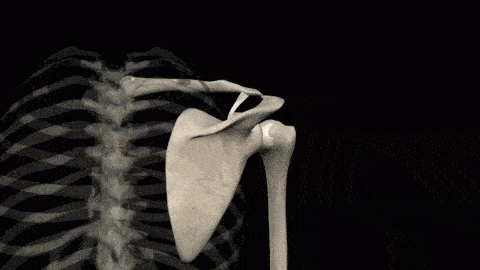Are You Moving Your Shoulder Blade Correctly?
July 30, 2018
Have you ever thought about how you’re moving your shoulder blade?
The answer’s probably no, right?
Well you’re not alone. I mean why would you? The shoulder blade just sits on your rib cage and I’m sure if it’s meant to move a certain way then it moves that certain way.
Well, not exactly.
You see the shoulder blade is surprisingly important. Imperfections in the way you’re moving your shoulder blade as you perform other movements can increase your risk of developing pain in your shoulder, neck, upper back, and even your elbow.
Why is the shoulder blade so important?
The shoulder blade provides the anchoring point between your arm and your torso. The shoulder joint moves through about 180 degrees in all three planes of movement. That’s a lot of movement, much more than any other joint in your body. And a general rule for joints is that in order to allow more movement, you have to sacrifice stability.
The shoulder sort of cheats a little to create all this movement, with some of the movement being undertaken by the joint between your humerus (arm bone) and your shoulder blade, while the rest is performed by the shoulder blade sliding on the rib cage.
Otherwise your shoulder would only move this far

Whereas it instead looks like this

This movement of the shoulder blade on the rib cage is elicited by three different muscles working in tandem to rotate the shoulder blade, and also needs to be synchronised with the muscles moving the arm, a process called “scapulohumeral rhythm”.
When there are imperfections in your scapulohumeral rhythm this can place increased load on muscles and other structures in the neck, upper back and shoulder.
How do I know if my shoulder blade is moving correctly?
Often you won’t know whether the muscles that move your shoulder blade are working correctly until a physiotherapist is performing an assessment on your shoulder and tells you. Although sometimes other people may have noticed your shoulder blade doing funny things when you’re using your arms.
For example, has anyone noticed the inside border of your shoulder blade popping off your rib cage (or “winging”) when you reach behind your back, reach over your head or bear weight through your arms? This suggests that one of the muscles involved in moving your shoulder blade (your serratus anterior) lacks strength.
Maybe someone has said that the bottom inside corner pops off your rib cage, rather than the whole inside border? This would suggest that one of the other muscles involved in moving the shoulder blade (your lower trapezius) is a little weak.
So should I get a physiotherapist to assess how my shoulder blade moves?
We wouldn’t necessarily recommend getting this assessed if you are not having any issues with your neck, shoulder, upper back or elbow. An exception would be as part of an injury prevention screening that a high level athlete may undertake for example.
When seeing a physiotherapist about shoulder, neck, upper back or elbow pain, the physiotherapist will likely assess your scapulohumeral rhythm as part of a thorough assessment and help you with some exercises to correct any imbalances they notice.

-
 What Can Make Neck Pain a Headache?
What Can Make Neck Pain a Headache?
Often people experiencing a headache are also experiencing neck pain/tightness a...
-
 How Physio Can Help Your Headaches
How Physio Can Help Your Headaches
Headaches are no fun. Some people will only experience short-term headaches ever...
-
 Muscle Strains
Muscle Strains
Winter sports are back and with them come more muscle strains, particularly hams...
